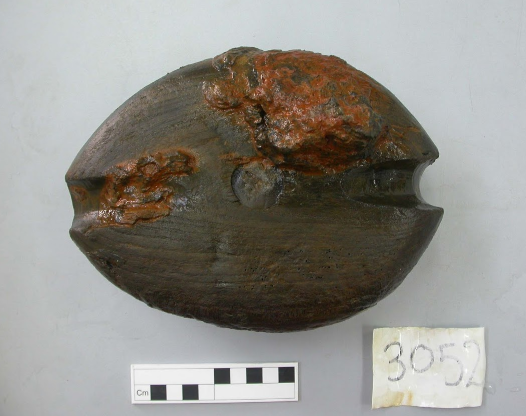Four month dive on site
Finds recovered from a wreck that mysteriously blew up in 1665 off Southend-on- Sea in Essex could be similar in scope to those recovered from King Henry VIII’s warship Mary Rose, experts believe.
Over the past four months, a specialist diving team led by Steven Ellis has undertaken 10 dives on London, one of England’s most important 17th century shipwrecks. They have been mapping the ship and discovering and retrieving a series of objects such as musket shots and ingots as well as ship fixtures and fittings including a hand-made glass cabin window, tools and personal items including pewter spoons, coins and navigational dividers.
The loss of the London was recorded by Samuel Pepys in his diary entry for March 8th 1665: ‘…This morning is brought me to the office the sad newes of The London, in which Sir J Lawson’s men were all bringing her from Chatham to the Hope, and thence he was to go to sea in her; but a little a’ this side the buoy of the Nower, she suddenly blew up. About 24 [men] and a woman that were in the round-house and coach saved; the rest, being above 300, drowned: the ship breaking all in pieces, with 80 pieces of brass ordnance. She lies sunk, with her round-house above water.’
The ship was used to bring King Charles II back to England from the Netherlands after the English Civil War.
Steve Webster, project manager at Cotswold Archaeology, said: ‘This two-year project is the only ongoing excavation on an underwater wreck in England at present. The artefacts that we can recover may be similar in scope to those recovered from the Mary Rose, but 120 years later in date. This will allow us to better understand a whole range of changes that occurred between the first half of the 16th century and the second half of the 17th century, a period that saw the expansion of Britain’s sea power and marks the start of the British Empire.’
Steven Ellis, who has been granted a Government licence to dive the wreck, said: ‘Working underwater in the murky Thames Estuary has been challenging but we’re making real progress in understanding the nature of this fascinating 300 year old wreck site.’
The London was one of only three completed wooden Second Rate ‘Large Ships’ that were built between 1642 – 1660 and is the only one that survives.
English Heritage commissioned Cotswold Archaeology to carry out the underwater excavation in order to find out just how much archaeological material survives. Divers are excavating three trenches in the bow of the wreck, designed to explore archaeological remains in the hold, the orlop deck where the anchor cables are, the main gun deck as well as carpenter and boatswains store rooms which would have contained tools and timber stores.
The London was rediscovered in 2005 during works in advance of the London Gateway Port development in Thurrock, Essex. In October 2008, it was designated under the Protection of Wrecks Act (1973) and immediately placed on English Heritage’s Heritage at Risk register as its fragile archaeological remains were being exposed by shifting sediment levels on the seabed.




